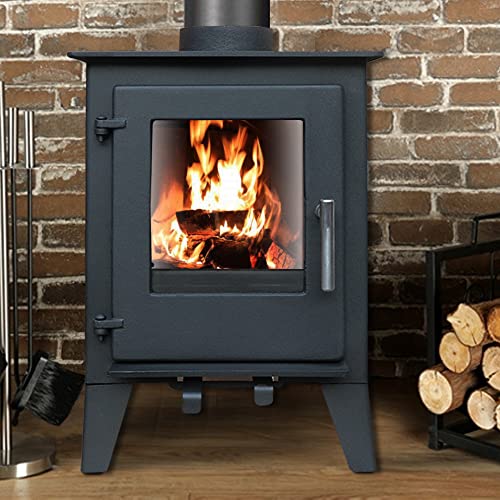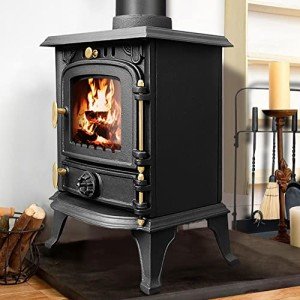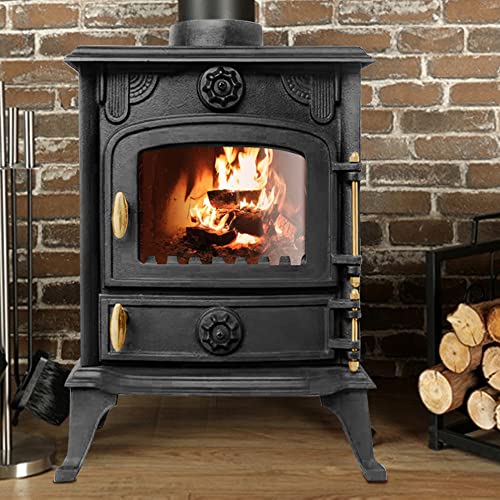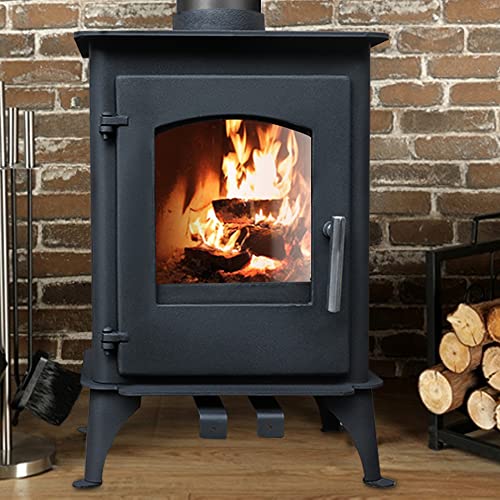Cast iron multifuel wood burning stoves with log stores have gained immense popularity among homeowners seeking an efficient, eco-friendly heating solution for their homes. Their appeal goes beyond mere functionality; they embody a blend of traditional craftsmanship and modern technology, catering to diverse heating needs while adding aesthetic value to living spaces. This guide provides an insightful overview of these stoves, discussing their features, benefits, and maintenance requirements, along with a frequently asked questions (FAQs) section for additional clarity.
What is a Cast Iron Multifuel Wood Burning Stove?
A cast iron multifuel wood burning stove is a heating appliance designed to burn various solid fuels, including wood, coal, and peat. Made primarily from iron, these stoves offer superior heat retention and distribution, ensuring warmth throughout the room. The inclusion of a log store—typically located below or beside the stove—provides convenient storage for firewood, enhancing the overall functionality and accessibility of the heating system.
Key Features of Cast Iron Multifuel Stoves:
- Materials: The primary material used in cast iron stoves provides durability and heat retention.
- Versatile Fuel Options: Ability to burn wood, coal, and other solid fuels.
- Efficiency: High thermal efficiency, leading to reduced fuel consumption and lower heating costs.
- Aesthetics: Available in various designs and finishes to complement home interiors.
- Log Storage: Built-in log stores protect firewood from weather elements and provide convenient access.
Benefits of Owning a Cast Iron Multifuel Wood Burning Stove
Investing in a cast iron multifuel wood burning stove brings numerous advantages. Here are some key benefits:
1. Eco-Friendliness
Using wood and other solid fuels produced from renewable sources can significantly reduce carbon footprints compared to traditional heating methods.
2. Cost-Effectiveness
With rising energy costs, utilizing wood as a fuel can lead to major savings on heating bills. Additionally, the high efficiency of these stoves means less fuel consumption for the same amount of heat.
3. Heat Retention
Cast iron is known for its excellent heat retention properties, maintaining a warm environment long after the fire has extinguished.
4. Versatility
The ability to burn multiple types of fuel makes these stoves adaptable to various circumstances, weather conditions, and personal preferences.
5. Aesthetic Appeal
Cast iron stoves are often designed with intricate detailing, enhancing a room's visual appeal while providing warmth.
Maintenance of Cast Iron Multifuel Stoves
Keeping a cast iron multifuel wood burning stove in top working condition requires regular maintenance. The following checklist can aid in preserving the functionality and longevity of the stove:
Maintenance Checklist:
- Regular Cleaning: Ashes and soot should be removed regularly to maintain efficiency and reduce the risk of chimney fires.
- Inspect Flue and Chimney: Routine checks for blockages or signs of creosote buildup.
- Check Seals and Gaskets: Ensuring that air seals are intact to optimize burning efficiency.
- Professional Servicing: Annual maintenance by a qualified technician is recommended for maximum safety and performance.
- Seasoned Firewood: Utilize dry, seasoned wood to minimize smoke and creosote buildup.
Installation Considerations
When considering the installation of a cast iron multifuel wood burning stove, several factors must be taken into account:
- Regulations: Familiarize yourself with local building codes and installation regulations regarding wood burning stoves.
- Location: Choose a suitable location that allows for safe venting, accessibility, and aesthetic integration with your home's design.
- Clearance: Ensure proper clearance from flammable materials to comply with safety standards.
Frequently Asked Questions (FAQs)
1. Can I use my multifuel stove for cooking?
While primarily designed for heating, many cast iron multifuel stoves are capable of cooking as well, particularly those equipped with a flat surface on top.
2. How efficient are cast iron multifuel stoves?
The efficiency varies between models, but many achieve efficiency ratings of 70-80%, depending on the fuel type and proper usage techniques.
3. What type of wood is best for my stove?
Dry, seasoned hardwoods like oak, hickory, and maple are generally preferred due to their higher energy content compared to softwoods.
4. How do I increase the longevity of my stove?
Regular maintenance, such as cleaning and checking seals, along with the use of quality fuels, can extend the life of your stove significantly.
5. What is the lifespan of a cast iron multifuel stove?
With proper care, a cast iron stove can last anywhere from 15 to 30 years, making them a worthwhile investment for reliable heating.
The cast iron multifuel wood burning stove with a log store exemplifies an investment in comfort, efficiency, and sustainability. Offering a versatile heating solution that caters to various lifestyles, these stoves combine practicality with aesthetic charm. Whether you are looking to reduce heating costs or embrace an eco-friendly lifestyle, a cast iron multifuel stove is worth considering. For those ready to transition, understanding the features, benefits, and maintenance requirements can lead to a rewarding experience that will keep homes warm for many years to come.
Summary Table of Key Features
| Feature | Description |
|---|---|
| Material | Durable cast iron with heat retention capabilities |
| Fuel Options | Wood, coal, or peat |
| Efficiency | High thermal efficiency (70-80%) |
| Aesthetics | Wide range of designs to match home interiors |
| Log Storage | Convenient space for keeping firewood dry and ready |
| Maintenance | Regular cleaning, annual professional servicing needed |
By selecting a cast iron multifuel wood burning stove with log storage, homeowners invest not only in warmth and efficiency but also embody a commitment to sustainable living.






